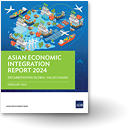Association of Southeast Asian Nations

The 10-member Association of Southeast Asian Nations (ASEAN) was established on 8 August 1967 in Bangkok, Thailand, with the signing of the ASEAN Declaration (Bangkok Declaration) by founding members Indonesia, Malaysia, Philippines, Singapore, and Thailand. Brunei Darussalam joined in 1984, Viet Nam in 1995, Lao People’s Democratic Republic and Myanmar in 1997, and Cambodia in 1999.
One of ASEAN’s primary objectives is to accelerate economic growth, social progress and cultural development by working together to strengthen the foundation for a prosperous and peaceful Southeast Asian community.
The ASEAN Community includes three pillars—the ASEAN Political-Security Community, ASEAN Economic Community, and ASEAN Socio-Cultural Community. Each pillar has its own Blueprint, and, together with the Initiative for ASEAN Integration (IAI) Strategic Framework and IAI Work Plan Phase II (2009–2015), they comprise the Roadmap for an ASEAN Community 2009–2015.
Strengthening ASEAN’s Sources of Growth through Regional Economic Integration. The ASEAN Economic Community (AEC), targeted for 2015, will provide huge economic opportunities for the region. It will not only boost the region’s productivity and growth, but will also enhance financial stability, expand resources for investment and development, and increase resilience to external shocks through policy coordination. The AEC is designed to help transform ASEAN into a stable and internationally competitive region.
The Road to the AEC: Milestones and Accomplishments
Free flow of goods. Since 2010, ASEAN has been a free trade area. The average intra-tariff rate for ASEAN–6 (Brunei Darussalam, Indonesia, Malaysia, Philippines, Singapore, and Thailand) under the Common Effective Preferential Tariff (CEPT) is 0.05%—from 3.64% in 2000. The share of intra-ASEAN trade also increased from 20.8% in 1980 to 25.4% in 2010. Within East Asia (ASEAN plus the PRC, Japan, and Republic of Korea), intraregional trade rose from 43% in 1990 to 55% in 2010. Integration has been largely market-driven (paced by expanding global value chains, production networks, new technology, and low-cost communications). Regional cooperation and policy dialogue have helped.
Free flow of services. To date, seven packages of services commitments in various sectors have been completed, with an eighth package under negotiations. This progressive liberalization of services trade includes both market access and national treatment. The possibility of enhancing the ASEAN Framework Agreement on Services (AFAS)—a key initiative for free services trade—is being explored to ensure the AEC becomes more relevant to changing markets.
Free flow of investment. Establishing the region as a single investment area remains a challenge. By end-2010, ASEAN FDI inflows amounted only to 4.2% of regional GDP—no change from a decade ago and below the 2007 peak.
Free flow of capital. To help integrate its capital markets, ASEAN is intensifying efforts to harmonize prospectus disclosure standards, facilitate mutual recognition of mutual funds, develop a framework for expedited review of secondary listing applications, and enhance corporate governance via development of a scorecard for assessing and ranking publicly listed companies by corporate governance practices.
Other AEC pillars: Competition, equitable development, and global economic integration. For “creating a competitive region with equitable development,” ASEAN works to narrow development gaps through initiatives such as the Greater Mekong Sub-region Program, the development of small and medium enterprises (SMEs), promotion of consumer protection, agriculture and food security, and capacity building for less developed ASEAN members.




